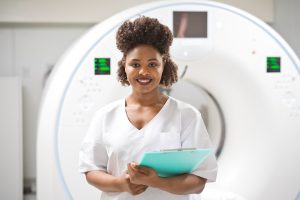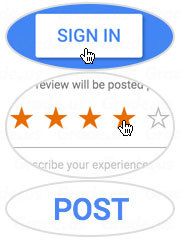Do Allied Health Professions Require a Medical Diploma?
Published - December 8, 2023

Do You Need a Medical Diploma to Be an Allied Health Professional?
Allied health professionals are generally defined as healthcare workers who aren’t medical doctors, nurses, or pharmacists. They provide the administrative, management, rehabilitative, and technical support patients and providers need. There are hundreds of potential job titles.
However, the level of education required for each position varies according to their responsibilities and government regulations. Some roles are state-licensed, registered, or certified, meaning a professional regulatory board determines the minimum education requirements. Other professions are less universally regulated.
Most administrative roles have no formal education requirements. On-the-job training, for example, is all you need to be a medical records technician. Employers, however, typically have stricter standards, preferring educated and certified applicants. Practically speaking, a diploma is the key to getting a good job.
A technical college aims to prepare students for entry-level jobs while positioning them to advance their careers.
What Programs Are Offered in the Allied Health Field?
There are dozens of training programs for allied health professions, but some are more widely available than others. Technical schools focus on in-demand occupations, which include:
Diagnostic Medical Sonographer
Diagnostic medical sonographers use high-frequency sound waves to create images of internal body structures, including organs, blood vessels, and soft tissue. A non-invasive and radiation-free test, it’s the modality of choice for evaluating the developing fetus and soft tissue injuries that don’t show well on radiographs.
Working in hospitals, clinics, and other outpatient facilities, a sonographer’s duties include:
- Patient preparation and positioning
- Performing abdominal, gynecological, cardiac, vascular, and other ultrasound exams
- Assisting doctors with guided sonograms
- Maintaining, calibrating, and troubleshooting ultrasound equipment
- Managing image quality
- Infection control and sanitation measures
- Recordkeeping
- Image interpretation
- Serving as a resource for healthcare providers ordering ultrasounds
- Patient care, education, hospitality
The US Bureau of Labor Statistics projects a 10% rise in demand for medical sonographers through 3023. Minimum training requirements range from a diploma or certificate to an associate degree.
Occupational Therapy Assistant
Occupational Therapy Assistants (OTAs) help people overcome physical, developmental, emotional, and sensory challenges. Employed in various settings, including hospitals, nursing facilities, rehabilitation centers, and community health agencies, they promote patient independence by teaching daily living skills.
Under the supervision of a licensed occupational therapist, OTAs:
- Conduct patient assessments
- Implement therapeutic interventions from motor skills exercises to sensory integration
- Recommend assistive devices, such as reachers, hearing aids and prosthetics
- Suggest home safety adaptations from non-slip flooring to grab bars in the shower
- Document progress and response to treatments
- Advocate for client needs, ensuring they receive all available public services
- Assist patients transitioning from facility to independent living
- Collaborate with contributing professionals
- Family education
Openings for occupational therapy assistants are skyrocketing nationwide as more older and disabled adults are choosing to live at home over assisted living. OTAs play a unique role in the mental health systems, working as advocates, mentors, and guides for clients with psychiatric illnesses. Expect a 23% increase in job openings in the coming decade.
Physical Therapist Assistant
Physical therapist assistants (PTAs) provide rehabilitative services under the guidance of a licensed physical therapist. They help patients manage pain, regain mobility, and maximize function after an illness or injury.
Based on a therapist’s evaluation, PTAs implement treatment plans, assisting with the following:
- Functional evaluations: assessing what patients can and can’t do for themselves
- Strength, gait, and balance testing
- Exercise demonstrations
- Stretching and range of motion therapy
- Pain-relieving interventions, such as heat and ice
- Alternative treatment modalities, including ultrasound and electrical stimulation
- Equipment care
- Ergonomics and body mechanics assessments
- Monitoring patient progress
- Documentation
- Professional collaboration with physicians, nurses, and other therapists
- Patient education
Jobs are available in hospitals, clinics, long-term care facilities, and sports medicine centers.
MRI Technician
MRI technicians use magnetic resonance imaging to capture detailed, cross-sectional images of internal body parts. It’s a particularly effective method for evaluating the brain, spinal cord, joints, and other complex structures.
The work includes:
- Patient preparation and positioning
- Screening for contraindications to testing, such as metal joint implants
- Education: explaining the test procedure, including instructions and what to expect
- Operating MRI machines
- Adjusting image parameters, including sequence, resolution, and contrast, to obtain the highest-quality images
- Maintaining, calibrating, and testing MRI equipment
- Monitoring sedated patients
- Safety procedures: ensuring that magnetic objects in the treatment suite are adequately secured
- Providing emotional support: MRIs can be long and challenging tests
- Emergency response to adverse reactions, such as claustrophobia-induced panic attacks
- Documentation
MRI technicians are employed primarily in acute care facilities and imaging centers. Outpatient settings, such as private practices and clinics, rarely offer such advanced technology.
Surgical Technician
A surgical technician, or scrub tech, assists surgeons, nurses, anesthesiologists, and other surgical team members before, during, and after surgical procedures. Employed by hospitals and surgical centers, they focus on safety and efficiency in the operating room.
Their responsibilities consist of:
- Preparing the operating room
- Setting up instrument trays and supplies
- Checking emergency equipment
- Positioning and draping patients
- Passing instruments to the surgeon
- Tracking instrument and sponge use
- Handling biological specimens
- Assisting with wound closure
- Transporting patients to the recovery room
- Waste disposal
- Cleaning, sanitizing, and sterilizing tools and equipment
Education requirements for surgical technicians vary by state. Demand for qualified applicants is increasing, so many community colleges, vocational institutes, and universities offer accredited training programs.
Most employers prefer certification through the National Board of Surgical Technology and Surgical Assisting regardless of education level, which typically requires at least a diploma.
Medical Records and Health Information Technician
Medical records and health information technicians manage health data. Their job is to maintain, organize, and secure medical records in compliance with legal and ethical standards.
In this non-clinical role, their duties include:
- Organizing, classifying, and maintaining paper and electronic health records
- Data entry
- Reviewing records for accuracy and completeness
- Medical coding — assigning alphanumeric medical codes to diagnoses and services for research, billing, and classification purposes
- Data security — managing, storing, and disposing of files per HIPAA regulations
- Release of information — obtaining consent for and responding to patient and provider requests for records
- Health information analysis — creating the data-driven reports used by healthcare administrators to analyze health trends
- Archiving — transferring aging records into long-term storage
- Professional collaboration — working with patients, providers, insurers, and billing specialists to find necessary data
Health information technicians typically need some level of post-secondary education to break into the field. A diploma is the most popular option. Recordkeeping is remarkably complex due to regulations, so certification is often required to land this in-demand role.
Final Thoughts
If you’re ready for a better future, opportunities in allied health are booming. You’ll make a living helping others in tangible and rewarding ways. There are dozens of career options to suit every interest and aptitude, but opportunities don’t exist. You make them happen through preparation, dedication, and education. CBD College can help.
Want to Learn More?
We prepare our students for successful and rewarding careers in healthcare quickly and effectively. With classes starting every month and thousands of successful CBD graduates working in healthcare, find out how, in as few as 9 months, you can gain the credentials, knowledge, and skills to begin your rewarding healthcare career. Allied health programs we offer include:
Diagnostic Medical Sonographer Program
MRI Technician Program
Occupational Therapy Assistant Program
Physical Therapist Assistant Program
Surgical Technologist Program
Contact us now to learn more.



